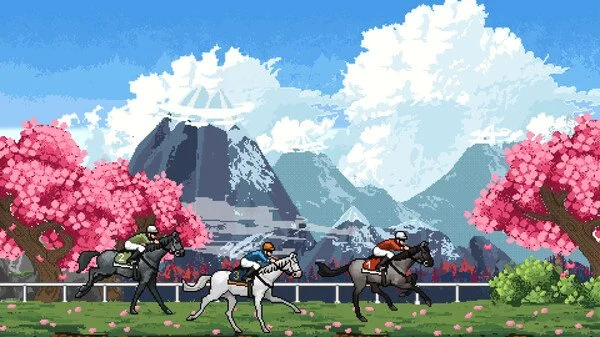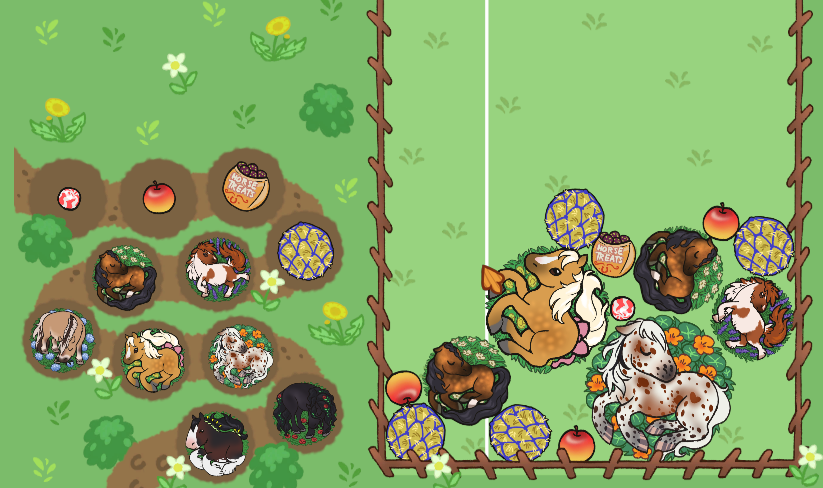New High Quality Horse Asset for Developers: This animated Horse by Aragon 3D is now available in Unreal Marketplace
There’s a brand new animated horse model available for Unreal Engine, and it looks like the best game-ready horse model I’ve seen to date. Let’s take a brief look:
In case you’re new to this topic: the market of game-ready horse assets is not in a great place for horse accuracy. Horse Animset Pro by Malbers is popular and widely used, but unfortunately leads to wonky leg behavior being reproduced in hundreds of games, most notably the constantly bent forelegs that I’ve complained about on various occasions.
Horse Herd is a more promising competitor, but so far hasn’t seen widespread use yet, partly because it’s not yet available for Unity, but I’ve also heard some devs say that HAP has many advantages over it in usability. Apart from those two main competitors, there’s also a myriad of even worse models and animation packs that feature all sorts of impossible anatomy, including this 350$ “Anatomy Model” that apparently uses a distorted dog skull and features front-facing predator eyes.
I do appreciate a pretty dappled grey coat, and this one looks excellent.
These dirt splashes from below are looking a lot more realistic than the random blots horse games tend to have.
With the new Real Time Horse by Aragon 3D, another promising competitor enters the scene: Like Horse Herd, this Realistic Horse with Animations (that’s its product title on the Marketplace) is primarily available for Unreal Engine at the moment.
The new model features convincing progressive dirt texturing, muscle definition customization, detailed options for sweat rendering, mane and tail physics, and a handful of animations including movement in all four gaits, jumping, and some lateral movement. At first glance, it looks quite impressive, and the motions seem to be a clear improvement over the available competitors. At $94.99, the animated horse by Aragon 3D costs a little bit more than Horse Herd or Horse Animset Pro, but is still very affordable compared to the thousands of dollars it would cost to model, rig, animate and texture a horse on demand by professional artists.
The render quality is impressive, but the neck and head look a little odd from the side.
The coats all look very good to me, although the terminology of their names is not quite correct.
So does the asset hold up to every bit of equestrian scrutiny? Not quite:
On the sideview shots of the model, I find that the horse looks slightly ewe-necked, having more muscle on the underside of the neck rather than the topline. In a real horse, that can be a conformation flaw or a training issue, but I doubt it’s a conscious choice in the portrayal. The corners of the mouth and the position of the bit look a bit too low in the face - a quite common flaw, actually, people often seem to underestimate how far up a horse’s mouth can really open.
The Western style saddle and its materials look very good to me, but the bridle setup is odd: noseband and cheek piece have been combined as if on a halter, but then that same cheek piece still connects to a bridle. This is a type of setup that apparently exists in real life – called a Cossack bridle – but I can’t help but wonder if this is an intentionally obscure choice of bridle, or an unconscious simplification of how nosebands and cheek pieces usually work. The bridle of choice to fit the saddle would have been a Western headstall without a noseband, in my opinion, or perhaps a bitless bridle that has a noseband but no mouthpiece. An English bridle on the other hand (the most popular type of bridle, but not exactly fitting this saddle) would feature a headstall that connects directly to the bit (no rings along the way) and a noseband that connects to a separate leather strap that also runs around the horse’s poll, behind the ears.
English bridle: noseband and bit connect to two separate cheek pieces (source)
Western bridle: no noseband, bit is attached to headstall (source)
Cossack bridle: noseband and bit connect to the same cheek piece, but note that there are no rings connecting either noseband or throatlatch. (source)
Bridle as portrayed in the asset: noseband and bit connect to the same cheek strap by a ring.
As for the animations, I’m happy to report that I spot no major flaws in footfalls and joint-bending, yay! I find the backwards movement a bit awkward and the head and back look a tad stiff at the canter, but those are relatively minor issues where I’m nitpicking at a high level. One of the idle animations unfortunately also features weird and unnecessary foreleg bending that results in an S-curve between knee and fetlock. It’s vastly less pronounced than in HAP, but I speculate this comes from the same misguided desire to make the horse idly move around a little, but forgetting about anatomy in the process.
I invite my equestrian friends to correct me if I’m wrong but I think the pose of that left foreleg is simply not feasible with how equine tendons work.
Despite that handful of hickups, I would personally love to see this asset get used in games, judging simply by what I can see in its promotional imagery. Unfortunately I don’t have the UE experience to judge its usability from a developer experience, which appears to be where Horse Animset Pro shines. Through CGTrader, the new model by Aragon3D can be purchased (albeit at a higher price point) in Autodesk Maya, FBX and OBJ formats, which may make it possible to use the model and animation in Unity despite it not being available on the Unity asset store.
Are you a developer who’s worked with HAP, Horse Herd or the new Real Time Horse? I would love to learn more about how these tools compare in usability for devs, and what other arguments factor into choosing an asset – because while I’m only judging them on horse animation merit, I’d say the Real Time Horse by Aragon3D takes the clear lead.

















The Ranch of Rivershine stands out among the horse game niche. I’ve followed Rivershine and its creator Éloise Laroche of Cozy Bee Games for years and previously featured them on TMQ on multiple occasion. With the full release now a few weeks back, I sat down with Éloise once more to look back on five years of development, the lessons learned along the way, and of course, to learn what’s next in store for her one woman studio.